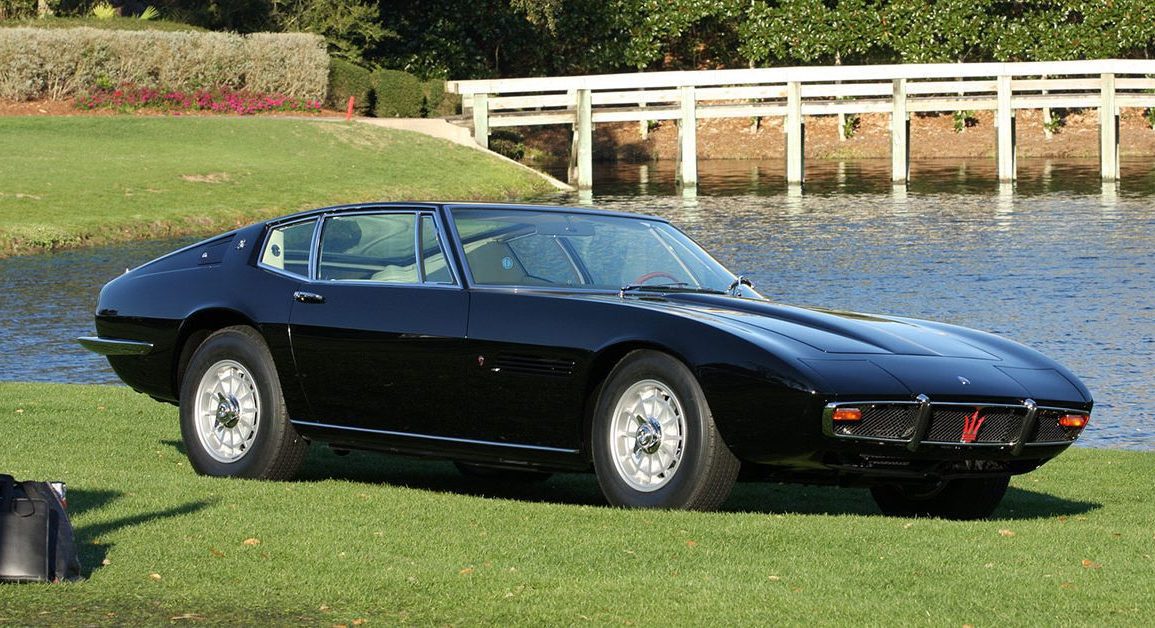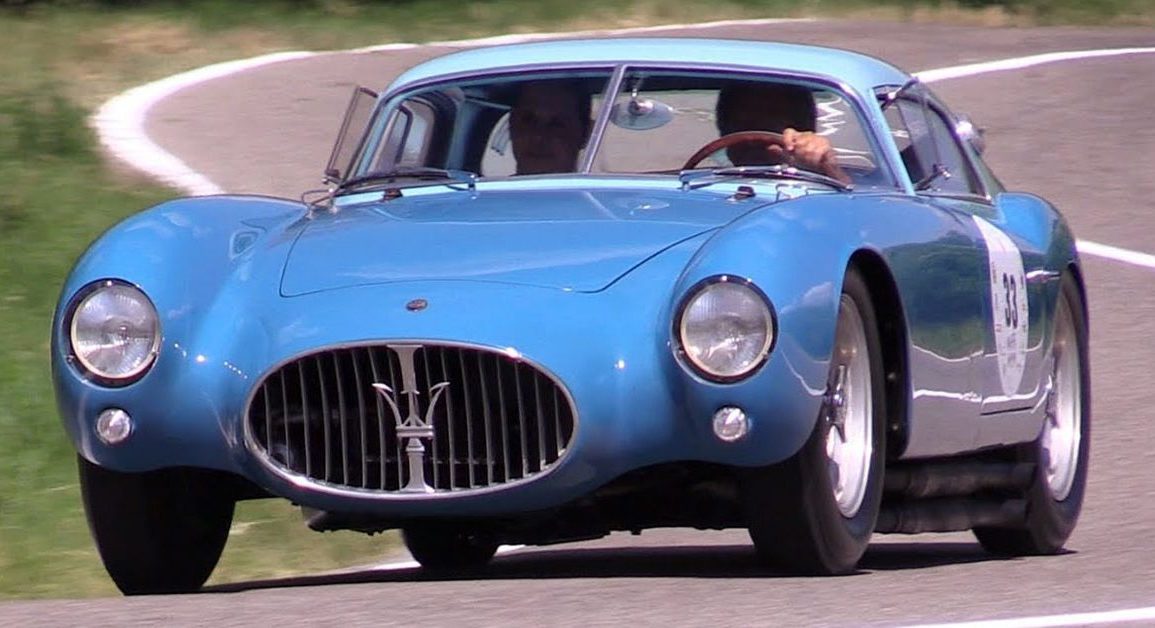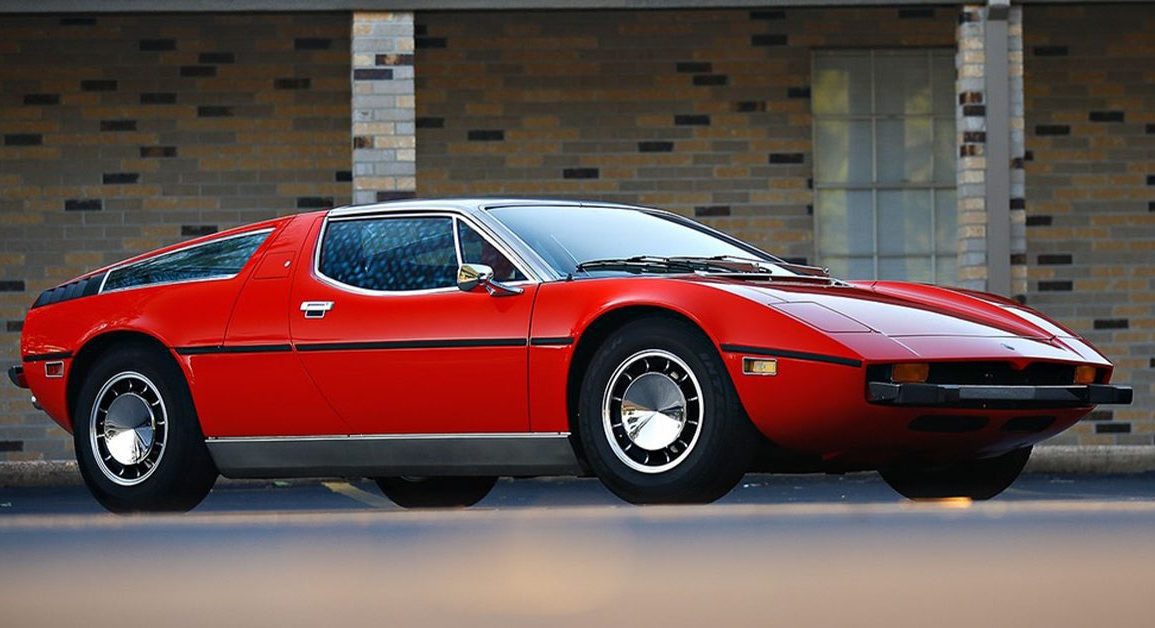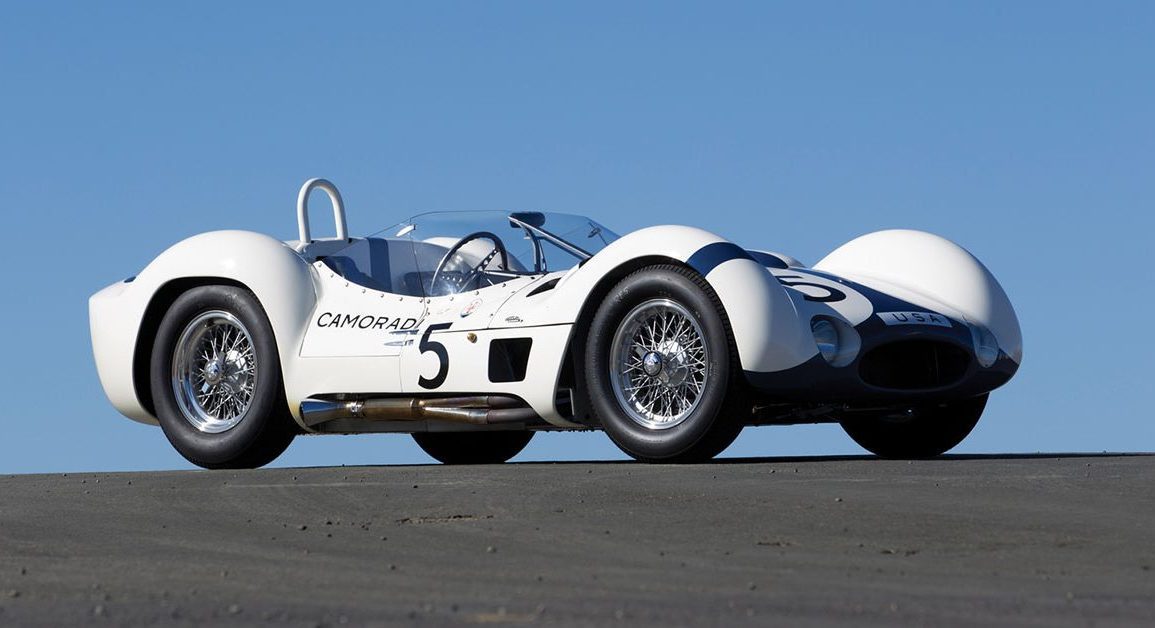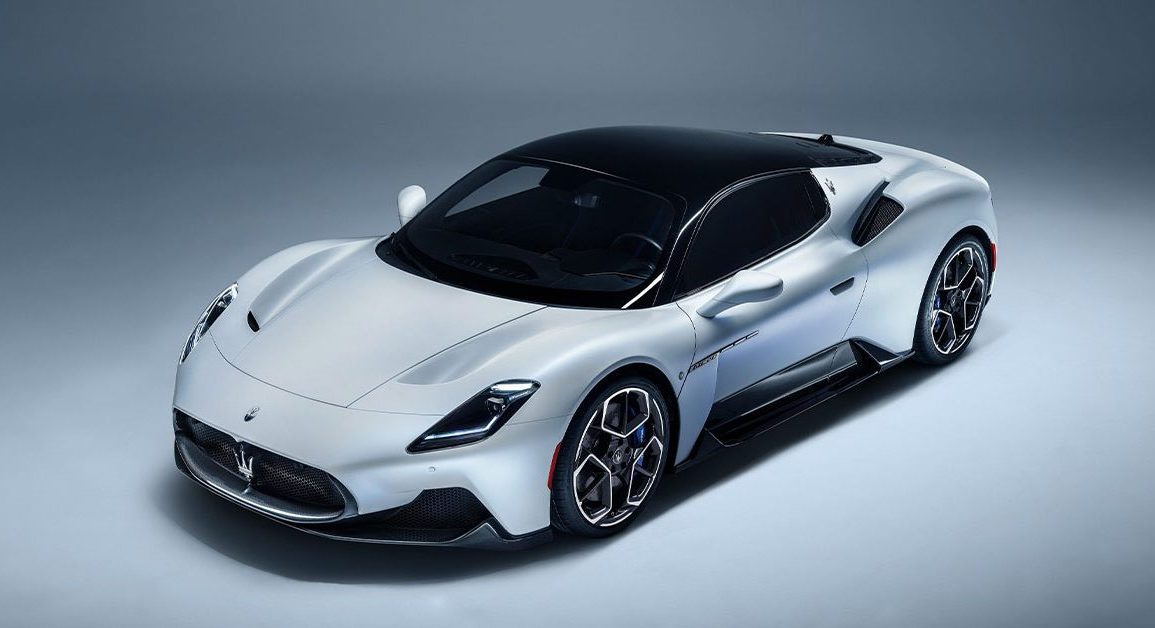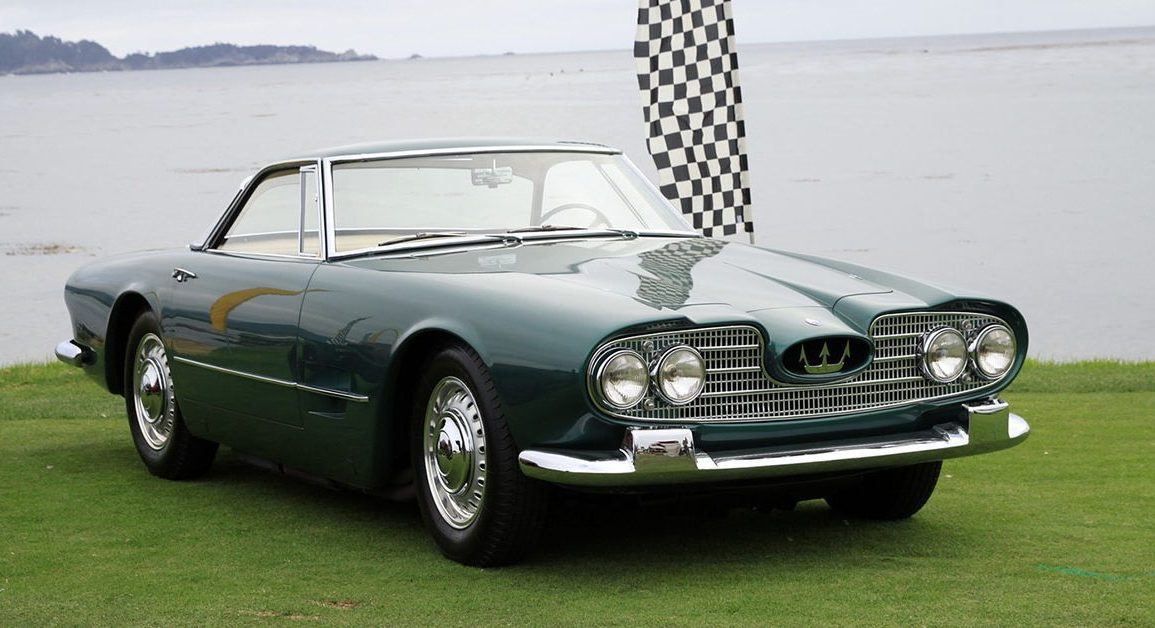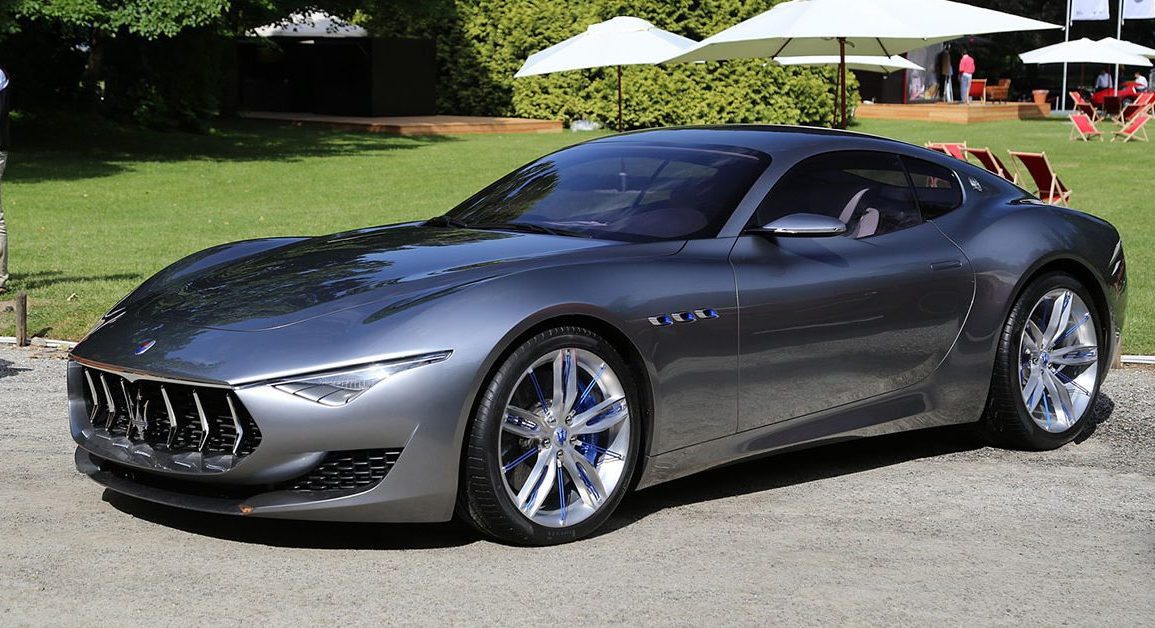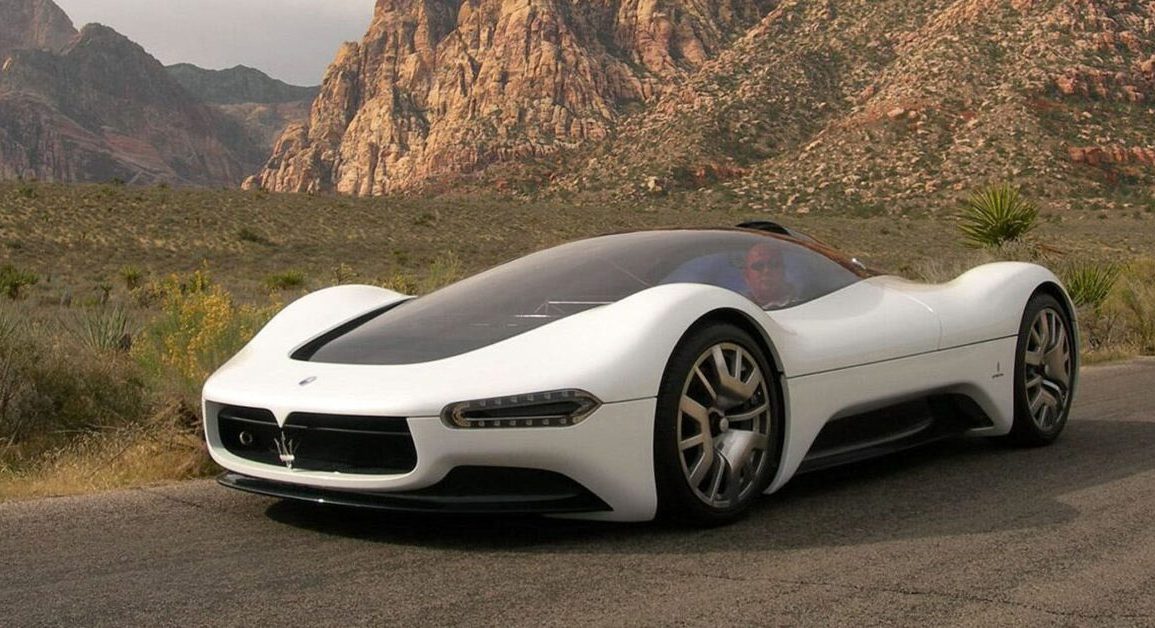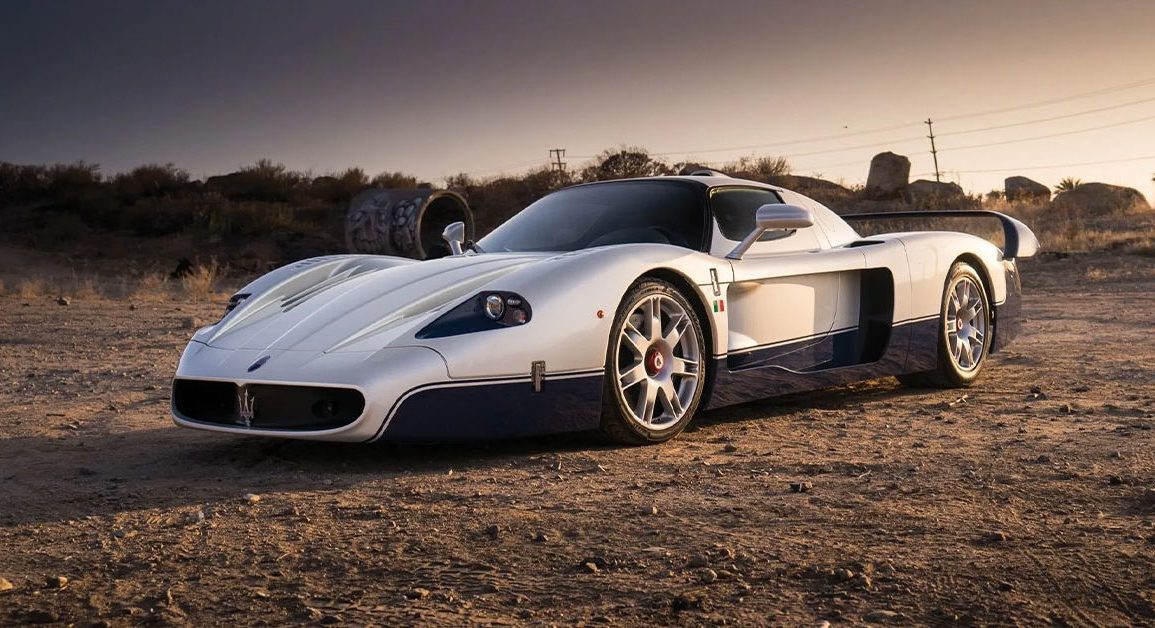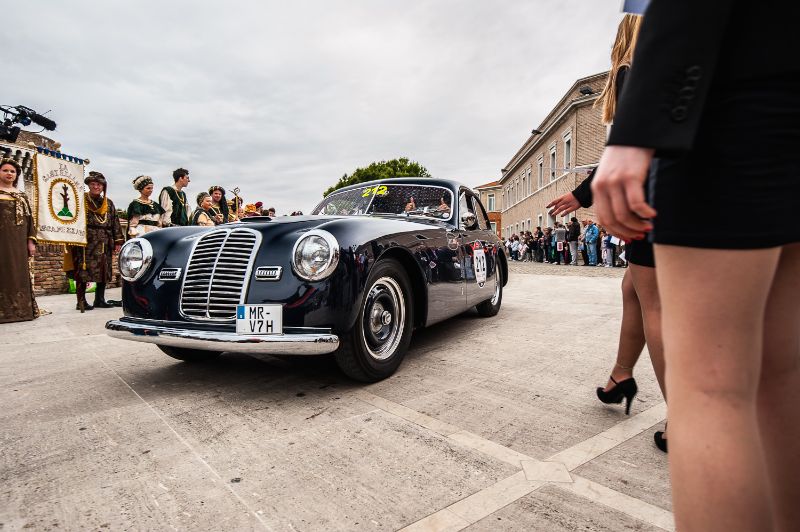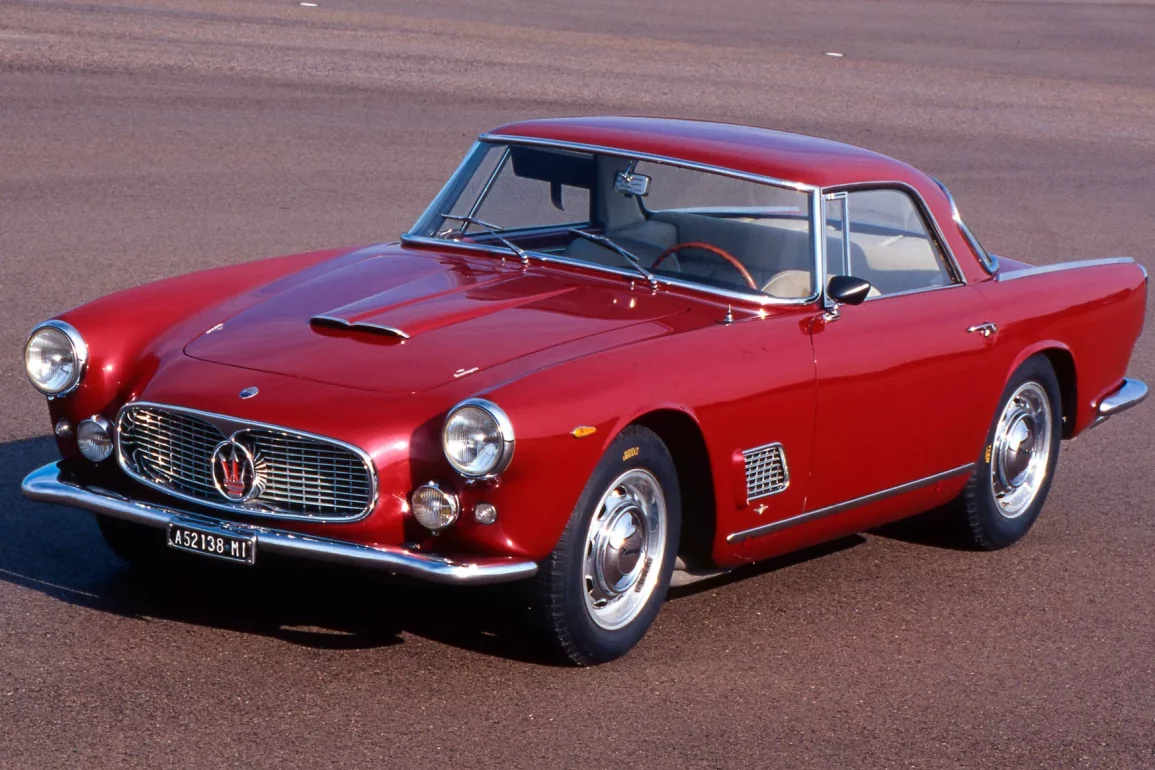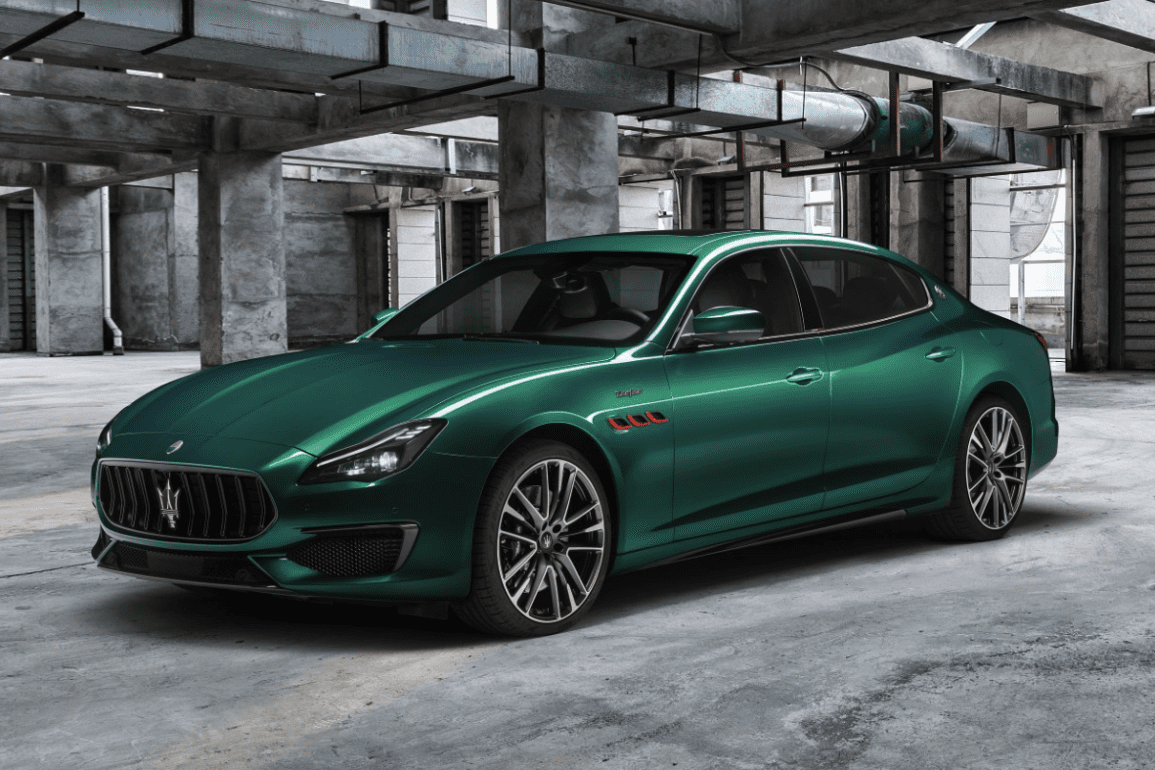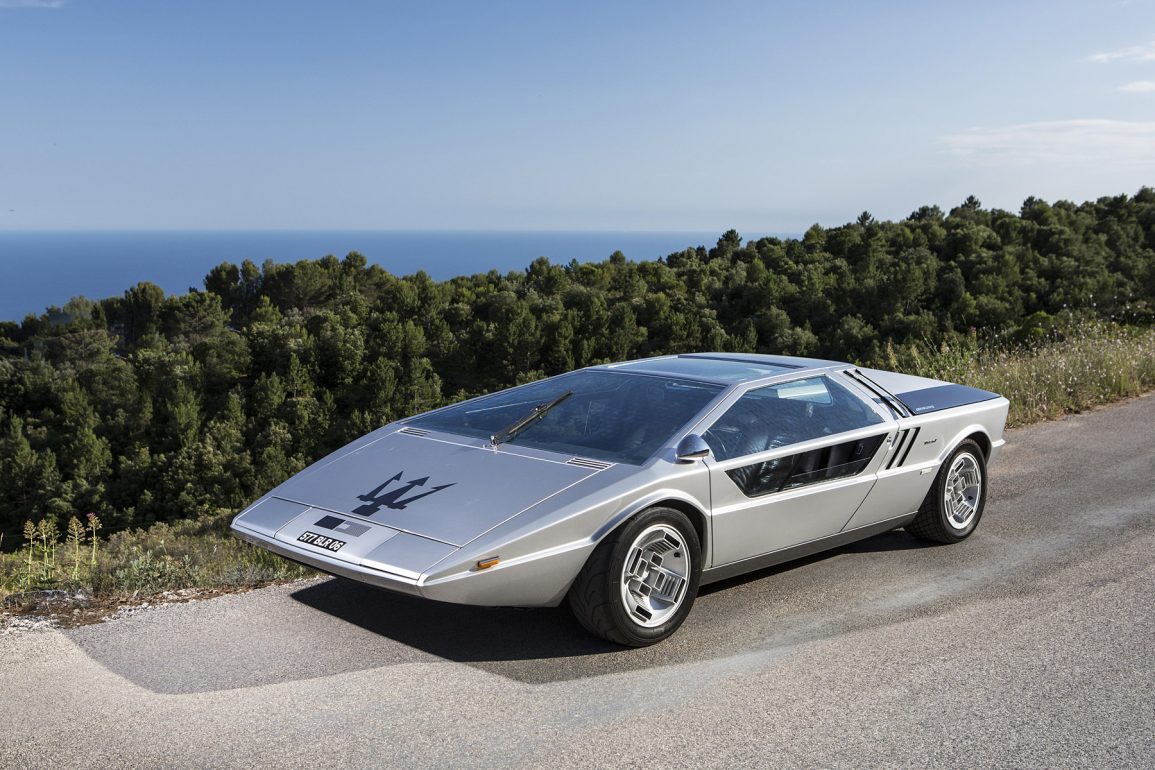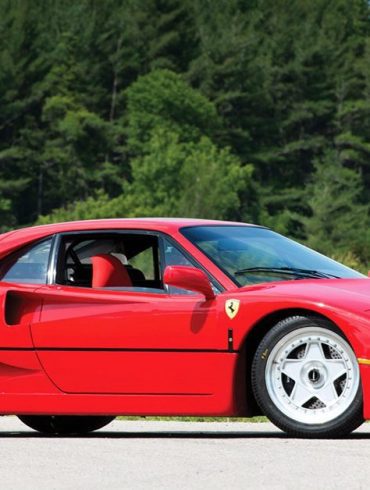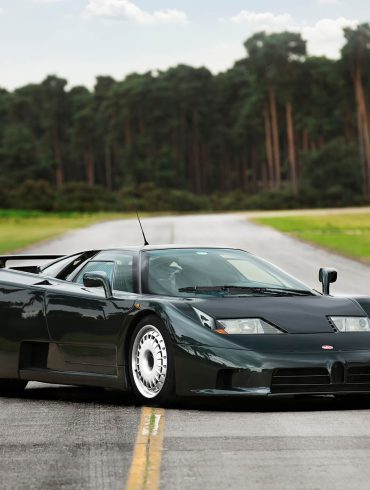The Greatest Maseratis of All Time
Sultry Italians, Here Are The Best Maseratis Ever Made
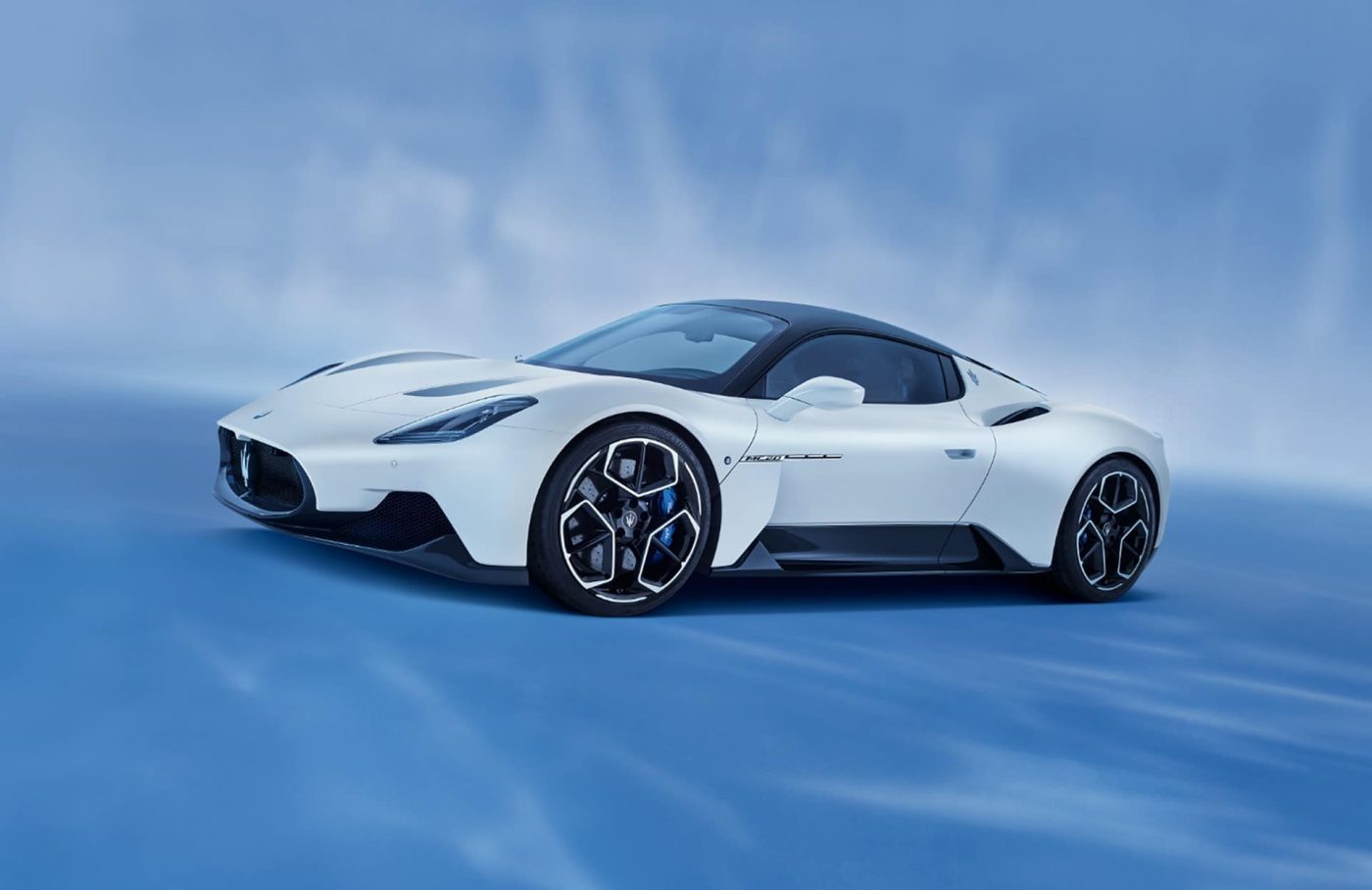
The brand's racing credentials and Italian flair make these Maserati's fantastic automotive gems
About Our Selections
Maserati has long been a symbol of Italian luxury, style, and high-performance engineering, crafting cars that perfectly blend elegance with thrilling driving experiences. From iconic classics that graced racetracks to modern masterpieces that offer unparalleled sophistication, Maserati has a rich history of creating cars that exude passion and exclusivity. In this article, we'll take a journey through the best Maserati cars ever made, showcasing the models that have defined the brand's legacy.
What sets Maserati apart is its ability to deliver luxury and performance in equal measure, much like Lamborghini’s signature flair for drama and raw power. While Lamborghinis are celebrated for their aggressive styling and exhilarating speed, Maseratis offer a more refined approach, combining breathtaking design with a distinctively smooth yet powerful driving experience. Join us as we explore the most iconic Maseratis that have left a mark on automotive history.
Maserati Ghibli
The thoroughbred GT
Why We Picked It:
A 4.7-liter V8 engine producing 335 horsepower and 325 pound-feet of torque sent to the rear wheels made this GT a true thoroughbred. The dry-sump V8 engine with four twin-choke carburetors sets it apart from the wet-sump engines found in the comparable Mexico and Quattroporte.
The vehicle started as a 2+2, despite its size being designed as a two-seater. It shared its chassis with the newly announced Quattroporte II, which also had a cart-sprung rear suspension. Alfieri, an engineer, was the project's key manager.
It was first shown to the public in late 1966 at the Ghia booth at the Turin Auto Show, and customers could start receiving their orders in March 1967. The steel (with alloy hood) bodies were made by Vignale.
The Ghibli's striking visual aspect, named after an Egyptian desert storm wind, was another great feature and might have rapidly sold itself on looks alone. The exceptional design was created by a teenage Giorgetto Giugiaro at the Ghia studio in Turin.
Specifications:
Price: $85,000-$300,000
Engine: 4.7 L V8
Power: 335 hp
Torque: 325 lb-ft
Transmission: 5-Speed Manual
Curb Weight: 3,681 lbs
Highlights:
One of the first GT cars to have a V8 engine was the Maserati Ghibli, well-known for its tasteful appearance and top-notch performance.
The Ghibli is known for its superb handling characteristics. Maserati equipped it with an independent front suspension, rear leaf springs, and a rear live axle, providing a balanced, sporty driving experience.
Learn More:
Maserati A6GCS/53
The most beautiful Maserati ever?
Why We Picked It:
Only four units of the Maserati A6GCS/53 were manufactured, a design masterpiece signed by Pininfarina that raised the throne of Maserati, at the highest point of the coachbuilder's relations with Ferrari, which led to some discomfort and some disagreement.
Part of a mechanized chassis that was for sale at the Maserati dealer in Rome, owned by Guglielmo Dei, "Mimmo" Dei, who commissioned Pininfarina to carry out the bodywork, making it one of the most beautiful cars of all time.
Pininfarina created a distinct design with brand traits for the Maserati chassis. The tubular chassis is derived from the 1940 A6GCS with improvements and is powered by an aluminum-alloy six-cylinder in-line engine churning out 170 horsepower.
The Maserati A6GCS/53 Berlinetta's styling and design were special due to their combination of aerodynamic elegance, distinctive details, race-inspired heritage, and handcrafted excellence.
Specifications:
Price: $3,000,000-$5,000,000
Engine: 2.0L Inline-Six
Power: 170 hp
Torque: 143 lb-ft
Transmission: 4-Speed Manual
Curb Weight: 1,984 lbs
Highlights:
The car's handcrafted construction showed Italian craftsmanship and attention to detail. Each Berlinetta was a work of art tailored to the owner's preferences.
The A6GCS/53 Berlinetta was born from the company's popular racing cars, showcasing its performance-oriented design.
Learn More:
Maserati Bora
Like an enlivening breeze
Why We Picked It:
The Bora, powered by Maserati's tried-and-true 90° V8, was a bona fide supercar that could reach up to 170 mph. It was the first Maserati with a mid-mounted engine.
The Bora was named after a brisk breeze that blows in from the Adriatic Sea's eastern coast, and its design was entrusted to Giorgetto Giugiaro and his recently established Italdesign company. Officine Padane manufactured the chassis in Modena.
The Bora's hydraulic system, which controls the brakes, pop-up headlights, driver seat, and adjustable pedal block, was developed by Citröen after the French automaker acquired Maserati. With 310 horsepower, it could reach up to 162 miles per hour.
The oil crisis and new tax restrictions put in place by the Italian government severely reduced the demand for high-end sports cars like the Maserati Bora.
Specifications:
Price: $100,000-$300,000
Engine: 5.8L V8
Power: 330 hp
Torque: 325 lb-ft
Transmission: 5-Speed Manual
Curb Weight: 3,569 lbs
Highlights:
The Bora's design incorporated sleek, aerodynamic lines that flowed gracefully from the front to the rear. The car's low-slung profile, long hood, and smoothly integrated bumpers created a timeless and elegant look.
The Bora's side vents, located just behind the doors, served a functional purpose by helping to cool the engine and adding a distinct visual element.
Learn More:
Maserati GranTurismo Trofeo PrimaSerie
The anniversary trophy
Why We Picked It:
To celebrate 75 years of Maserati grand tourers, the company produced a limited special edition based on the ICE-powered GranTurismo Trofeo and named it PrimaSerie (Italian for "first edition") in 2023.
The luxurious 2+2 cabin is decked out in two distinct color schemes, each with special touches. The wheels and trunk of this elegant Grigio Lamiera Matte vehicle include carbon fiber accents and anniversary plaques.
Seats inside the GranTurismo Trofeo are upholstered in perforated two-tone leather and include the car's signature red insignia on the headrests. High-quality black leather with striking red stitching covers the dashboard, just like the console.
The GranTurismo PrimaSerie is inspired by the Trofeo and is driven by the same 3.0 liter twin-turbo V6 Nettuno engine that generates 542 hp and 479 lb-ft of torque and sends it to all four wheels. A top speed of 199 mph and a sprint to 60 mph in 3.3 seconds result from the powertrain's eight-speed automated transmission.
The new GranTurismo is an advanced take on a flagship model that embodies the company's commitment to speed, comfort, and elegance.
Specifications:
Price: $205,000
Engine: 3.0L Twin-Turbocharged V6
Power: 542 hp
Torque: 479 lb-ft
Transmission: 8-Speed Automatic
Curb Weight: 4,072 lbs
Highlights:
The GranTurismo Trofeo PrimaSerie seamlessly blends the hallmarks of grand touring with the high performance of a supercar and comfort-focused features for long-distance driving.
This special edition Maserati takes inspiration from the brand's legendary A6 1500. It encapsulates generations of tradition while introducing innovative technology solutions to keep drivers connected on any journey.
Learn More:
Maserati Tipo 61 'Birdcage'
A revolutionary race car
Why We Picked It:
In the late fifties, income from Maserati’s successful 3500GT meant they could develop racing cars like the Maserati Tipo 61 again. Engineer Giulio Alfieri took the tubular spaceframe design in sports cars to the limit with the Tipo 60 in 1959. The design became known as the ‘Birdcage’ for its intricate tube-frame structure.
Nestled near the center of the chassis was a modified version of the Maserati 200S engine, but canted at 45 degrees to reduce bodywork height. The suspension wasn’t far off the highly successful Maserati 250F Grand Prix racer with a double-wishbone front setup and a de-dion tube axle in the rear.
Although somewhat overly complex, the Tipo 60 was the launching point for a series of birdcage cars that used increasingly larger engines, including the Tipo 61, Tipo 64 Supercage, and midengine variants such as the Tipo 63 and Tipo 65. Only six Tipo 60s were produced until a larger 2.9-liter engine was fitted, producing the much more prolific Tipo 61.
Specifications:
Price: $2,000,000-$3,000,000
Engine: 2.9L Inline-Four
Power: 250 hp
Torque: 239 lb-ft
Transmission: 5-Speed Manual
Curb Weight: 1,257 lbs
Highlights:
The Maserati Birdcage debuted with Stirling Moss behind the wheel, who used the car’s light fuel consumption and extremely low weight to win the 1959 Delamare-Deboutteville Cup.
That same year, Tipo 60 cars took many hillclimbs and gentlemen-driver victories.
Learn More:
Maserati MC20
A giant leap for Maserati
Why We Picked It:
Maserati manufactured their own car in-house for the first time in over 20 years with the MC20 (short for Maserati Corse 2020). The 3.0 L twin-turbo V6 in the Nettuno generates 630 horsepower. It powers a superlight vehicle weighing less than 1,500 kg (3,307 lbs) thanks to its 539 lb-ft of torque.
After creating a CAD model of the vehicle, Maserati used sophisticated software to predict the vehicle's mass, aerodynamic drag, suspension compression, and other dynamic fields. Along with the model, this was put through state-of-the-art fluid dynamics simulations.
The end product is a highly aerodynamic and lightweight body that creates downforce, cools the engine, and supplies the turbochargers with air. Instead of a rising wing that comes out of the body or a permanent wing like the MC12, this car has a simple yet wonderfully Italian rear spoiler.
The MC20's signature butterfly doors are a perfect example of the tasteful excess that can only come from Italy. In the best conceivable way, they scream luxury and overengineering while still being works of art.
Specifications:
Price: $217,000-$250,000
Engine: 3.0L Twin-Turbocharged V6
Power: 630 hp
Torque: 539 lb-ft
Transmission: 8-Speed Dual Clutch
Curb Weight: 3,307 lbs
Highlights:
The Nettuno V6 engine features several innovative technologies, such as a unique twin-combustion system borrowed from Formula One race cars and dry sump lubrication systems.
The MC20 has a modern, aerodynamic design that draws inspiration from Maserati's racing history. The car's butterfly doors and rear spoiler are particularly striking.
Learn More:
Maserati 5000 GT
1960s epitome of Italian supercars
Why We Picked It:
Maserati built the 5000 GT as their flagship model in response to an imperial request from the Shah of Iran. It combines Maserati’s standard chassis with the potent 4.5-liter V8 from the 450 sports race car. Bodied by the best coach builders in Italy, this model became the best Grand Tourer on the market.
1959 was a transitional year for Maserati, which positioned the company from producing Maserati race cars to road cars. The 3500 GT was their first real production car and the only one available until the Shah of Iran visited the factory.
In November of 1958, Mohamed Reza Pahlavi was impressed with the 3500 GT catalog, but he wanted the fastest GT car in the world. At his suggestion, Alfieri and Adolfo Orsi fitted the 4.5-liter V8 into a chassis, creating the first 5000 GT.
This car, chassis 103.002, was sent to Touring of Milan for a distinct body and interior named after the Shah. Touring gave the vehicle a distinctive nose from the successful 250F GP car and four headlights within the front grill.
Specifications:
Price: $720,000–$1,400,000
Engine: 4.5L V8
Power: 325 hp
Torque: 330 lb-ft
Transmission: 4-Speed Manual / 5-Speed Manual
Curb Weight: 3,642 lbs
Highlights:
The 5000 GT was one of the first cars to use a quad-cam V8 engine. This type of engine is known for its high performance and smooth operation.
The 5000 GT was designed by Touring Superleggera, one of the most famous car design studios ever.
Learn More:
Maserati Alfieri
A functional and influential concept
Why We Picked It:
Maserati unveiled the Alfieri, a 2+2 concept car, to celebrate the brand's centenary at the Geneva Palexpo. The Alfieri was an exciting but realistic and 100% functional prototype that said much about the design DNA of future Maseratis.
The striking concept bears the name of Alfieri, the most prominent of the Maserati brothers and the engineering genius who founded "Officine Alfieri Maserati" in Bologna a century ago. At the Maserati Centro Stile, Lorenzo Ramaciotti and Marco Tencone were in charge of creating the Alfieri.
The aerodynamic and sleek design of the Maserati Alfieri is a result of Maserati's racing heritage. The car has a long hood, a short rear deck, and a butterfly door design. The Alfieri also has aerodynamic features like a front splitter, a rear diffuser, and a large rear wing.
Under the hood of the Alfieri lies a 3.0L twin-turbocharged V6 churning out 490 hp and 442 lb-ft of torque. The power is sent through an 8-speed automatic transmission to the rear axle, going from 0 to 60 mph in 4.0 seconds and reaching 186 mph.
Specifications:
Price: N/A
Engine: 3.0L Twin-Turbocharged V6
Power: 490 hp
Torque: 442 lb-ft
Transmission: 8-Speed Automatic
Curb Weight: 3,300 lbs
Highlights:
The interior of the Maserati Alfieri is luxurious and sporty. The cabin is trimmed in high-quality leather, suede, and carbon fiber.
The Alfieri also has several advanced features, such as a digital instrument cluster, a heads-up display, and various driver assistance systems.
Learn More:
Maserati Birdcage 75th
The revivalist futuristic concept
Why We Picked It:
Pininfarina decided to revive the 1960s era of road racing in honor of its 75th anniversary. The Birdcage 75th was an innovative take on the Maserati brand and an extreme design expression.
The Birdcage 75th brings back the legend of a dream car, an amalgam of cutting-edge engineering, unique styling, and sports pedigree. Unsurprisingly, the prototype's moniker is a direct nod to the iconic Birdcage Tipo 63, as it represents a futuristic continuation of the superb Maserati race cars of yesteryear.
The chassis and mechanicals of these cars dubbed the birdcage for their unconventional triangular tube structure, were left on full display behind enormous front windscreens.
The Birdcage 75th is based on the road racing chassis of the Maserati MC12 and is a tribute to the ideals of the dream car era. The Birdcage 75th's primary focus may have been exploring uncharted stylistic territory. However, including a Maserati V12 engine producing more than 700 horsepower meant that the design concept had to adhere to specific race car norms.
Specifications:
Price: N/A
Engine: 6.0L V12
Power: 700 hp
Torque: 522 lb-ft
Transmission: 6-Speed Sequential
Curb Weight: 3,300 lbs
Highlights:
The Birdcage 75th was a showcase of Maserati's engineering and design capabilities. It was a car that was both technologically advanced and visually stunning.
The Birdcage 75th never went into production; however, it remains a significant car in Maserati's history and is considered one of the most beautiful concept cars ever made.
Learn More:
Maserati MC12
Cooler than the Enzo
Why We Picked It:
The Maserati MC12, introduced in 2004, used the chassis of the Ferrari Enzo, another Italian masterpiece. In contrast to the Enzo, which was planned to be produced 350 times, with an additional 50 units manufactured to meet the high demand for the $600,000 car, the MC12 was only supposed to be produced 25 times, merely to meet homologation of the race cars.
The Maserati was developed on the same chassis as the Enzo Ferrari but is significantly larger and more aerodynamic than the original. The MC12 is larger in every respect. Compared to the Enzo Ferrari, it accelerates quicker, brakes more effectively (with a shorter stopping distance), and has a greater top speed. The Enzo Ferrari can reach a high speed of 350 kph (217.5 mph), whereas the Maserati MC12 can reach a top speed of 330 kph (205 mph). The MC12 to accelerate from 0 to 60 mph in just 3.8 seconds
The MC12 has a 65°-mounted V12 engine developed from the six-liter unit seen in the Enzo Ferrari. It generates 620 horsepower and 481 lb-ft of torque at 5500 rpm. Unlike the Enzo, which can safely rev to 8200 rpm, this car's redline is only 7500.
Specifications:
Price: $2,000,000-$4,000,000
Engine: 6.0L V12
Power: 620 hp
Torque: 481 lb-ft
Transmission: 5-Speed Sequential
Curb Weight: 2,943 lbs
Highlights:
The Maserati MC12 was a limited-production, high-performance supercar with a racing pedigree, striking design, and exceptional exclusivity, making it one of the most remarkable cars ever to bear the Maserati badge.
The MC12 won numerous races and championships in the FIA GT1 racing championship.
Learn More:
Maserati A6 1500
Started the Maserati Gran Turismo tradition.
Why We Picked It:
After producing supercharged race cars since 1929, one of Ernesto Maserati’s next ambitions was to take his cars on the roads of Italy. In designing the A6 for the roads, Maserati produced one of the first post-war Italian cars, beating Enzo Ferrari by several years.
Before the war, Maserati had raced 4, 6 and 8 cylinder engines, but focused on a new 6-cylinder design called A6TR or ‘Testa Riportata’ for the post war era. This used a detachable cylinder head and laid out a foundation for the immediate post-war Maseratis. Ernesto Maserati and Alberto Massimino worked on the new design which borrowed much from the pre-war cars. For reliability and tractability, an SOHC valvetrain was chosen over the DOHC from the prewar 6CM. The engine was made to honor Alfieri Maserati, one of the original Maserati founders.
The first A6 1500 prototype was completed in March of 1946 and was photographed by Franco Zagari. It featured Spider Corsa bodywork and was used by Ernesto Maserati for testing. At the same time Carrozzeria Pinin Farina was commissioned to produce a Coupe body which laid the shape for Maserati’s first road car. Eventually the design was refined to be very similar to the Cisitalia 202 also bodied by Pinin Farina.
Specifications:
Price: $1,000,000-$3,000,000
Engine: 1.5L Inline 6
Power: 65hp
Torque: N/A
Transmission: 4-Speed Manual
Top Speed: 95mph
Highlights:
Introduced in 1947, the Maserati A6 was a series of cars produced until 1956. Many variations of the A6 were produced, yet all featured either a 1.5L, or 2.0L inline 6 engine.
Many A6 cars featured coachwork from companies such as Zagato, Bertone, and Ghia to name a few. These cars usually have a unique history and provenance, requiring a detailed look at each example.
Learn More:
Maserati 3500 GT
Established Maserati as a road car manufacturer as it was their first production project.
Why We Picked It:
The 3500GT was a significant model for Maserati, as it was the first road car to be built in relatively large volume. In 1957, Maserati had officially withdrawn from motorsport, and full attention was now on the production of Gran Turismo automobiles.
The elegant design of the 3500GT was the creation of Milanese coachbuilder Carrozzeria Touring, whose Superleggera (Superlight) patent used aluminum panels wrapped over a thin, tubular steel frame that described the body shape.
The inline-6 engine, characterized by excellent torque output at low engine speed, came from the 350S racing car of 1956. In 1961, triple Weber carburetors were replaced by a Lucas mechanical fuel-injection system, boosting the power to 235 hp in the 3500GTI. ZF supplied the four-speed gearbox (five-speed from 1960 and three-speed automatic on request), with other components sourced from the best suppliers of the day.
Front disc brakes became available as an option from 1959. The 3500 GT and GTI achieved great commercial success, establishing Maserati as one of the world’s most exclusive high-performance automotive marques.
Specifications:
Price: $150,000-$250,000
Engine: 3.5L Tipo 101 V6
Power: 220 hp
Torque: 254 lb-ft
Transmission: 4-Speed Manual
Curb Weight: 3,175 lbs
Highlights:
The Maserati 3500 GT Coupe was the main variant of the 3500 GT model. Taking the inline 6 cylinder engine from the 350S racing car, the 3500 GT produced 220hp driving the rear wheels.
Famous owners of the 3500 GT included Prince Rainier III of Monaco, the tenor Giuseppe di Stefano, actors Alberto Sordi, Tony Curtis, Stewart Granger, Rock Hudson and gentleman racing driver Anthony Quinn.
Learn More:
Maserati Quattroporte Trofeo
Ultimate expression of Maserati's luxury and performance.
Why We Picked It:
The Maserati Quattroporte Trofeo is the most powerful and performance-oriented version of Maserati's flagship luxury sedan, blending Italian elegance with exhilarating speed. Introduced in 2020, the Trofeo edition elevates the Quattroporte to new heights, transforming it into a true driver’s car while retaining the opulent comfort and sophistication that the model is known for.
At the heart of the Quattroporte Trofeo is a 3.8-liter twin-turbocharged V8 engine sourced from Ferrari, producing an impressive 580 horsepower and 538 lb-ft of torque. Paired with an 8-speed automatic transmission and rear-wheel drive, the Trofeo offers an engaging and dynamic driving experience that combines speed with Maserati’s trademark luxury.
The Quattroporte Trofeo maintains the elegant and timeless design of the standard Quattroporte but adds aggressive touches to hint at its enhanced performance.
The Quattroporte Trofeo features Maserati's Integrated Vehicle Control (IVC) system, ensuring precise handling and stability. With the Corsa mode activated, the Trofeo delivers sharper throttle response, faster gear shifts, and a more aggressive exhaust note, making it feel like a true sports car. The adaptive suspension allows for a balance between comfort and performance, providing a refined ride when cruising and responsive handling when pushed to the limits.
Specifications:
Price: Starting at $157,000
Engine: 3.8L twin-turbocharged V8
Power: 580hp
Torque: 538 lb-ft
Transmission: 8-Speed Automatic
Top Speed: 4.2 seconds
Highlights:
This potent engine allows the Trofeo to accelerate from 0 to 60 mph in just 4.2 seconds and reach a top speed of 203 mph, making it the fastest Quattroporte ever produced.
The front features a red-accented Maserati trident logo, larger air intakes, and carbon fiber trim, giving it a sportier and more assertive appearance. The side profile includes unique Trofeo badging on the front fenders, while the rear boasts quad exhaust tips and a more pronounced diffuser, emphasizing the car’s performance capabilities.
Learn More:
Maserati Boomerang
fff
Why We Picked It:
The Maserati Boomerang was first displayed as a non-functional model at the Turin Motor Show in 1971. By the Geneva Salon in March 1972, it had been transformed into a fully operational vehicle.
The mechanics were borrowed from Maserati, the engine being the race-bred V8 of 4.7 litre, developing no less than 310 hp and good for an indicated top speed of 300 km/h.
Unlike now, it was not uncommon for manufacturers and coachbuilders to sell their concept cars when they had served their purpose. After the Barcelona show, the Boomerang remained in Spain and was eventually sold to a cabaret owner in Benidorm.
Specifications:
Price: $
Engine:
Power:
Torque:
Transmission:
Curb Weight:
Highlights:
One journalist observed it looked as though it was doing a hundred miles an hour standing still! It was then, until 1974, successively shown at the Paris, London and Barcelona motor shows and was unanimously praised for its audacity.


